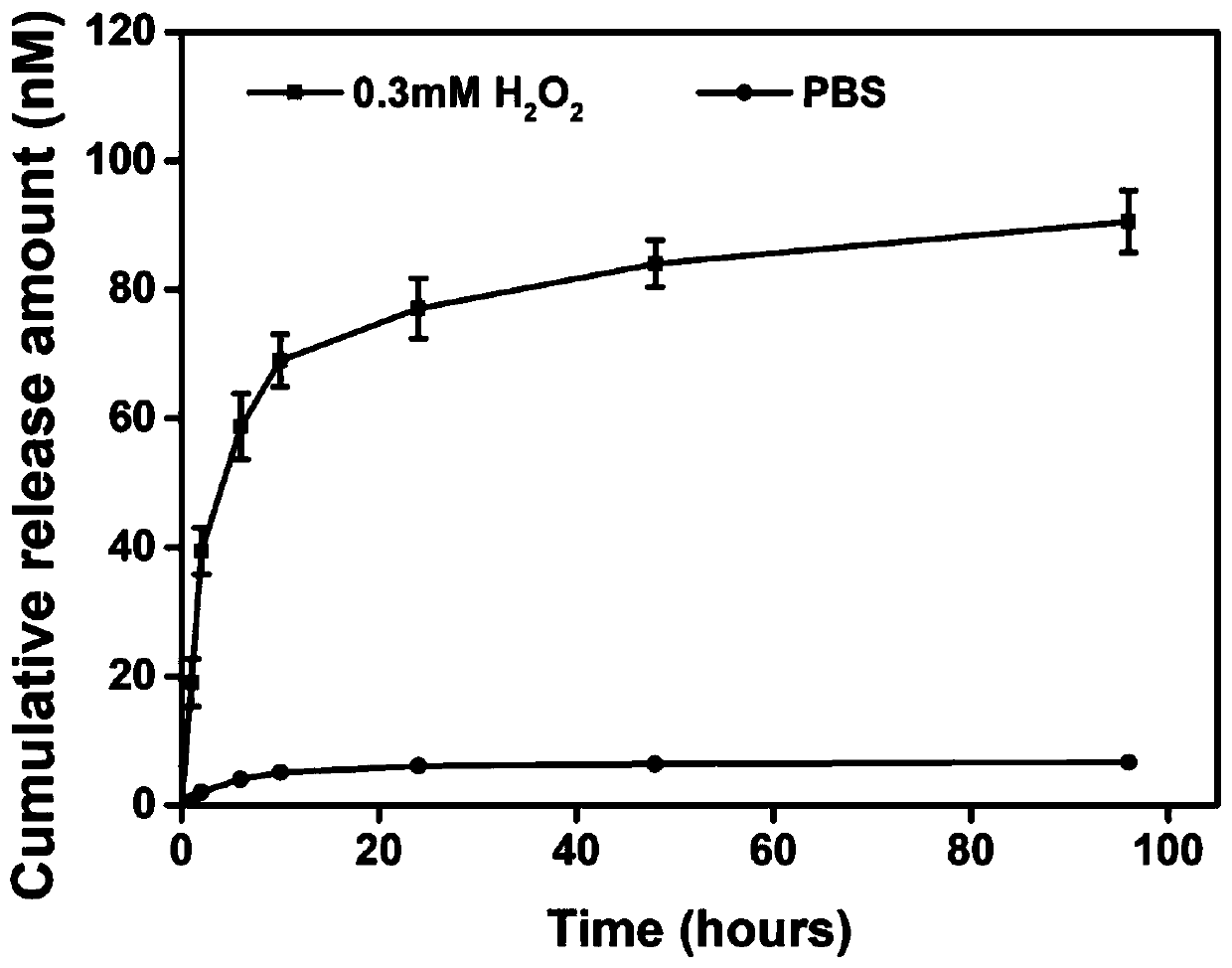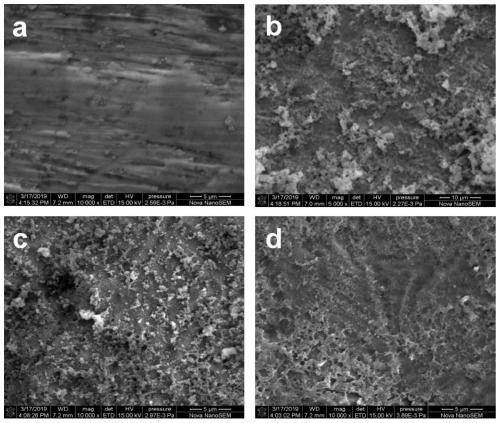Titanium-based active bone implant with ROS response and preparation method of implant
A bone implantation and active technology, applied in the direction of prosthesis, coating, tissue regeneration, etc., can solve problems such as lack of integration of surrounding bone tissue, early material loosening and displacement, and surgical failure, etc., to achieve easy-to-operate preparation methods, Good osteogenic differentiation, excellent osseointegration effect
- Summary
- Abstract
- Description
- Claims
- Application Information
AI Technical Summary
Problems solved by technology
Method used
Image
Examples
Embodiment 1
[0040] Preparation of ROS-responsive titanium-based active bone implants (Ti / HA / OGP / Apt)
[0041] (1) Preparation of titanium sheets (Ti / HA) with hydroxyapatite deposited on the surface:
[0042] Polish the pure titanium sheet (diameter: 15mm; thickness: 3mm) with 400#, 1000#, 2000# sandpaper in sequence, then ultrasonically clean it with lye, absolute ethanol, and deionized water for 30 minutes, and then use hydrofluoric acid / nitric acid solution etching for 3min, so that the pure titanium sheet after ultrasonic cleaning has a rough topological structure. Finally, the etched pure titanium sheet is used as the cathode of the electrochemical reaction, and the platinum sheet is used as the anode. Cathodic oxidation in electrolyte solution of calcium chloride, ammonium dihydrogen phosphate, sodium chloride and sodium citrate;
[0043] (2) preparation of borate bond;
[0044] A. Dissolve 0.47g of p-nitrobenzoic chloroformate in 15mL of tetrahydrofuran, and fill with nitrogen at...
Embodiment 2
[0050] Fabrication of ROS-responsive titanium-based active bone implants
[0051] (1) Preparation of titanium sheets with hydroxyapatite deposited on the surface:
[0052] Polish the pure titanium sheet (diameter: 15mm; thickness: 3mm) with 400#, 1000#, 2000# sandpaper in sequence, then ultrasonically clean it with lye, absolute ethanol, and deionized water for 20 minutes, and then use hydrofluoric acid / nitric acid solution etching for 3min, so that the pure titanium sheet after ultrasonic cleaning has a rough topological structure. Finally, the etched pure titanium sheet is used as the cathode of the electrochemical reaction, and the platinum sheet is used as the anode. Cathodic oxidation in electrolyte solution of calcium chloride, ammonium dihydrogen phosphate, sodium chloride and sodium citrate;
[0053] (2) preparation of borate bond;
[0054] A. Dissolve 0.47g of p-nitrobenzoic chloroformate in 15mL of tetrahydrofuran, and fill with nitrogen at 0°C to obtain solution ...
Embodiment 3
[0060] Fabrication of ROS-responsive titanium-based active bone implants
[0061] (1) Preparation of titanium sheets with hydroxyapatite deposited on the surface:
[0062] Polish the pure titanium sheet (diameter: 15mm; thickness: 3mm) with 400#, 1000#, 2000# sandpaper in sequence, then ultrasonically clean it with lye, absolute ethanol, and deionized water for 40 minutes, and then use hydrofluoric acid / nitric acid solution etching for 3min, so that the pure titanium sheet after ultrasonic cleaning has a rough topological structure. Finally, the etched pure titanium sheet is used as the cathode of the electrochemical reaction, and the platinum sheet is used as the anode. Cathodic oxidation in electrolyte solution of calcium chloride, ammonium dihydrogen phosphate, sodium chloride and sodium citrate;
[0063] (2) preparation of borate bond;
[0064] A. Dissolve 0.47g of p-nitrobenzoic chloroformate in 15mL of tetrahydrofuran, and fill with nitrogen at 0°C to obtain solution ...
PUM
| Property | Measurement | Unit |
|---|---|---|
| diameter | aaaaa | aaaaa |
Abstract
Description
Claims
Application Information
 Login to View More
Login to View More - R&D
- Intellectual Property
- Life Sciences
- Materials
- Tech Scout
- Unparalleled Data Quality
- Higher Quality Content
- 60% Fewer Hallucinations
Browse by: Latest US Patents, China's latest patents, Technical Efficacy Thesaurus, Application Domain, Technology Topic, Popular Technical Reports.
© 2025 PatSnap. All rights reserved.Legal|Privacy policy|Modern Slavery Act Transparency Statement|Sitemap|About US| Contact US: help@patsnap.com



